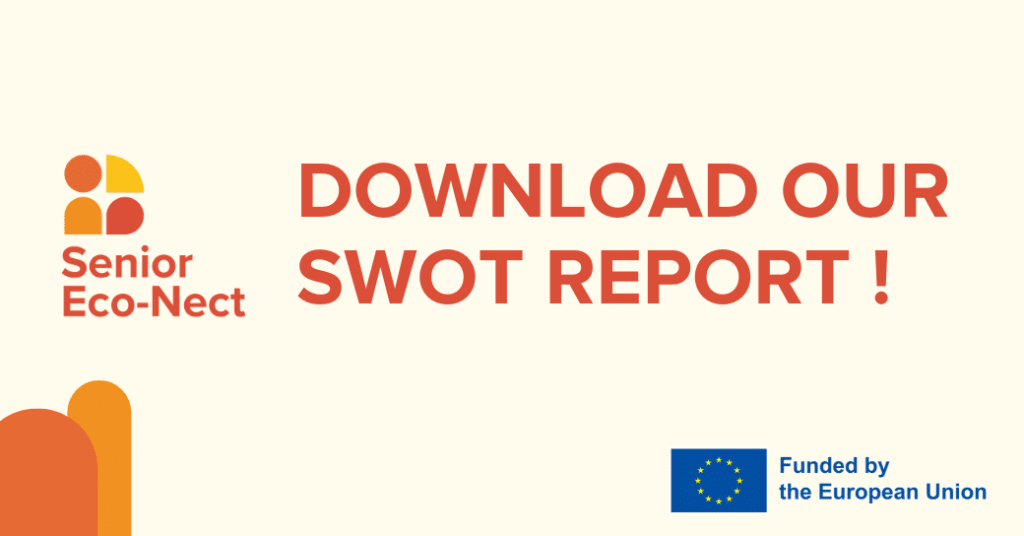The SWOT report is conducted on the basis of an online and anonymous SWOT survey which was distributed across four partner regions. In total, 108 effective responses were collected. The respondents from five main stakeholder groups shared their valuable opinions in the answers they provided. The distribution of the respondents’ background is moderately even, hence there is a very low risk that the SWOT analysis may be influenced by a specific group.
Highlights of SWOT Analysis
The perceived strengths of developing a robust silver economy include a strong performance in certain industries, such as tourism and hospitality industry, effective regional connections and networks, continuous support from communities and the wider society, development in the sectors of enterprises, education, social services and volunteering.
The lack of awareness and interests, absence or insufficient policy supports and funding, and lack of communication, connections and collaborations are the five main perceived weaknesses that would negatively influence the regional/national silver economy development.
The respondents also shared three main opportunities and four significant threats that they believe would be significant to develop an inclusive and interconnected silver economy. The opportunities were perceived to be brought by the sustained development of industrial sectors, such as tourism and hospitality industry, and health care industry. Moreover, increasing connections and collaborations were also perceived to bring more opportunities to the ecosystem of silver economy.
The shortage of support and facilities, absence or insufficient connections and collaborations, current and future status of older people and lack of interests were reported by the respondents that they would pose critical threat and challenges to the future silver economy development.
Discover the results of this analysis in the report below.


